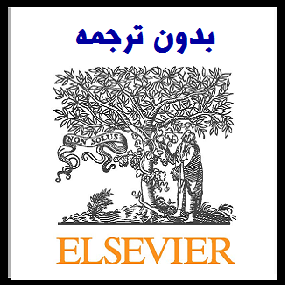مقاله انگلیسی تاثیر عوامل استرس زا بر ایمنی و بیماری در ورزشکاران (2018 الزویر)


| عنوان فارسی مقاله | تاثیر عوامل استرس زا وابسته به ورزش بر میزان ایمنی و بیماری در ورزشکاران تیم ورزشی |
| عنوان انگلیسی مقاله | The impact of sport related stressors on immunity and illness risk in team-sport athletes |
| فهرست مطالب | Abstract Abbreviations Keywords ۱ Introduction ۲ Salivary secretory immunoglobulin A (SIgA), T-cells and URTI ۳ Stressors that team-sport athletes face on a continual basis ۴ Interactive effect of stressors on immunity and infection risk ۵ Strategies to reduce immunodepression and avoid illness in team-sport athletes ۶ Conclusions Practical implications Acknowledgments References |
| نمونه مقاله انگلیسی | abstract
Objectives: Elite team-sport athletes are frequently exposed to stressors that have the potentialto depress immunity and increase infection risk. Therefore, the purpose of this review is to describe how team-sport stressors impact upon immune responses, along with exploring whether alterations in these markers have the potential to predict upper respiratory tract illness symptoms. Design: Narrative review. Methods: Salivary secretory immunoglobulin A (SIgA) and T-cell markers have been shown to predict infection risk in individual endurance athletes. Papers discussing the impact of team-sport stressors on SIgA and T-cells were discussed in the review, studies discussing other aspects of immunity were excluded. Journal articles were sourced from PubMed, Web of science and Scopus. Key search terms included team-sport athletes, stressors, immunity, T-cells, cytokines, SIgA and upper respiratory illness. Results: Most team-sport stressors appear to increase risk for illness. An association between reduced SIgA and increased illness incidence has been demonstrated. Intensive training and competition periods have been shown to reduce SIgA, however, itis less clear how additional stressors including extreme environmental conditions, travel, psychological stress, sleep disturbance and poor nutrition affect immune responses. Conclusions: Monitoring SIgA may provide an assessment of a team-sport athletes risk status for developing upper respiratory tract symptoms, however there is currently not enough evidence to suggest SIgA alone can predict illness. Team-sport stressors challenge immunity and it is possible that the combination of stressors could have a compounding effect on immunodepression and infection risk. Given that illness can disrupt training and performance, further research is required to better elucidate how stressors individually and collectively influence immunity and illness. Introduction Athletes are continually exposed to stressors that have the potential to depress immune functions and increase infection risk, particularly upper respiratory tract infections (URTI) or the common cold. Indeed, acute URTI is the most common infectious illness reportedinelite athletes.1 Illness is of great concernfor athletes as it can disrupttraining and performance.1 To understand why athletes appear to have a heightened risk for infection, the field of exercise immunology emerged. Studies in this area have been largely concerned with identifying immune markers that can be used to predict athletes’ susceptibility to illness, mostly in endurance athletes. Specifically, mucosal immunity and T-cell cytokine responses have been found to be key determinants of URTI risk in athletes participating in individual endurance sports.2 However, there is comparatively little research in team-sport athletes, therefore whether such immune markers influence a team-sport athletes risk for URTI remains unclear. Team-sport athletes are an important populationto investigate as their closeproximity to teammates and other athletes (e.g. shaking hands, contact sports, changing rooms) may increase their exposure to infection-causing pathogens. Furthermore, team-sport athletes are continually exposed to a range of stressors which may depress immune responses. Such stressors include training, competition,travel, environmental extremes, psychological stress, sleep deprivation, poor nutrition and excessive alcohol consumption. It is possible that the combination of these stressors could amplify immunodepression, resulting in greater URTI risk than if each stressor were applied alone. The purpose of this review is to describe how team-sport stressors impact upon salivary secretory immunoglobulin A (SIgA) and T-cell responses, along with exploring whether alterations in these markers have the potential to predict infection risk. Finally, strategies to counteract the potential immunodepression evoked by these stressors will be proposed. |
| نمونه ترجمه کامپیوتری | چکیده
اهداف: ورزشکاران ورزشی تیم نخبگان اغلب در معرض عوامل استرس زا هستند که توانایی کاهش ایمنی و افزایش خطر عفونت را دارند. بنابراین هدف این بررسی توصیف نحوه تاثیر استرسورهای تیم بر روی پاسخ های ایمنی است و همچنین بررسی اینکه آیا تغییرات در این نشانگر ها توانایی پیش بینی علائم بیماری های دستگاه تنفسی فوقانی را دارند. طراحی: بررسی روایت. روشها: نشانگرهای ایمونوگلوبولین A ترشحی بزاقی (SIgA) و نشانگرهای T-cell برای پیشگیری از بروز عفونت در ورزشکاران استقامتی فردی نشان داده شده است. مقالاتی که در مورد تاثیر استرسورهای ورزشی تیم بر روی سلول های SIgA و T-تی مورد بحث قرار می گیرند در این بررسی مورد بحث قرار گرفت و مطالعات مربوط به جنبه های دیگر ایمنی حذف شدند. مقالات مجله از PubMed، Web of Science و Scopus تهیه شده است. کلمات کلیدی جستجو شامل ورزشکاران تیم ورزشی، عوامل استرسزا، ایمنی، سلول های T، سیتوکین ها، SIgA و بیماری های تنفسی فوقانی بودند. نتایج: بیشتر عوامل استرس زا در تیم ورزشی به نظر می رسد خطر ابتلا به بیماری را افزایش می دهد. ارتباط بین کاهش سیرا و افزایش شیوع بیماری ثابت شده است. نشان داده شده است که دوره های آموزشی و رقابت های شدید کاهش می یابد، اما هنوز مشخص نیست که چگونه اضطراب های شدید از جمله شرایط محیطی شدید، سفر، استرس روانی، اختلالات خواب و تغذیه نامناسب بر پاسخ ایمنی تاثیر می گذارد. نتیجه گیری: نظارت بر SIgA ممکن است ارزیابی یک وضعیت خطرناک ورزشکاران تیم ورزشی را برای ایجاد علائم دستگاه تنفسی فوقانی ارائه دهد، اما در حال حاضر شواهد کافی برای نشان دادن اینکه SIgA تنها می تواند بیماری را پیش بینی کند وجود ندارد. استرسورهای ورزشی تیم به چالش کشیدن ایمنی و ممکن است که ترکیبی از عوامل استرسزا می تواند یک اثر ترکیبی را بر ریشه ایمنی و خطر عفونت داشته باشد. با توجه به این که بیماری می تواند آموزش و عملکرد را مختل کند، تحقیقات بیشتری لازم است تا بتوانند به نحو احساسی در مورد اینکه چگونه عوامل استرس زا به طور انفرادی و جمعی بر ایمنی و بیماری تاثیر می گذارند، مورد نیاز است. توجه؛ (این ترجمه توسط نرم افزار انجام شده و ویرایش نشده است و احتمال وجود اشتباه در آن وجود دارد. در صورت ثبت سفارش، ترجمه توسط مترجمین مجرب انجام خواهد شد. برای مشاهده نمونه ترجمه های تخصصی و اخیر مترجمین جهت اطمینان از کیفیت ترجمه، اینجا کلیک نمایید.) |
| سال انتشار | 2018 |
| ناشر | الزویر |
| مجله | مجله علوم و پزشکی در ورزش – Journal of Science and Medicine in Sport |
| کلمات کلیدی | ورزشکاران تیم ورزشی، ایمنی، استرس های ورزشی، علائم تنفسی فوقانی، استراتژی های پیشگیری از بیماری |
| کلمات کلیدی انگلیسی |
Team-sport athletes, Immunity, Sport stressors, Upper respiratory symptoms, Illness prevention strategies |
| صفحات مقاله انگلیسی | 8 |
| مناسب برای رشته | تربیت بدنی |
| مناسب برای گرایش | روانشناسی ورزشی |
| توضحیات | این مقاله انگلیسی جدید بوده و تا کنون ترجمه نشده است. جهت ثبت سفارش ترجمه از لینکهای زیر استفاده نمایید. |
| دانلود مقاله انگلیسی | ○ دانلود رایگان مقاله انگلیسی با فرمت pdf (کلیک کنید) |
| سفارش ترجمه فارسی | ○ سفارش انجام ترجمه و تایپ این مقاله (کلیک کنید) |
| سایر مقالات این رشته | ○ مشاهده سایر مقالات رشته تربیت بدنی (کلیک کنید) |


